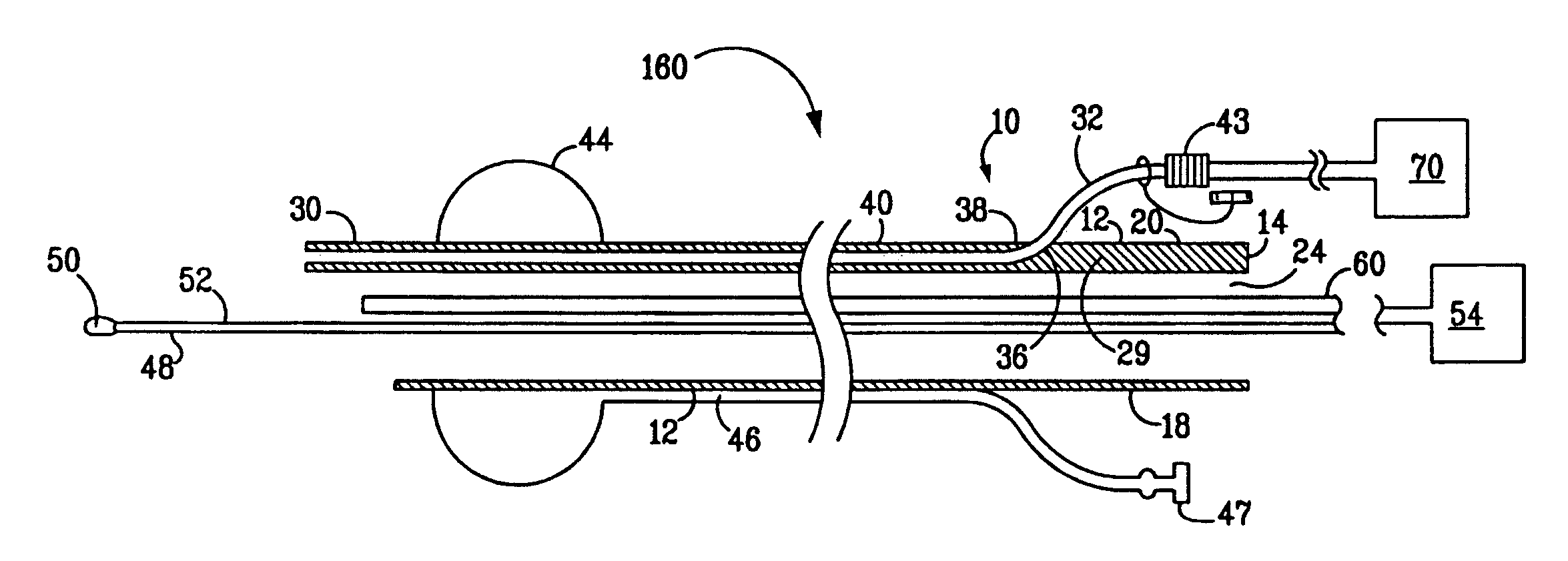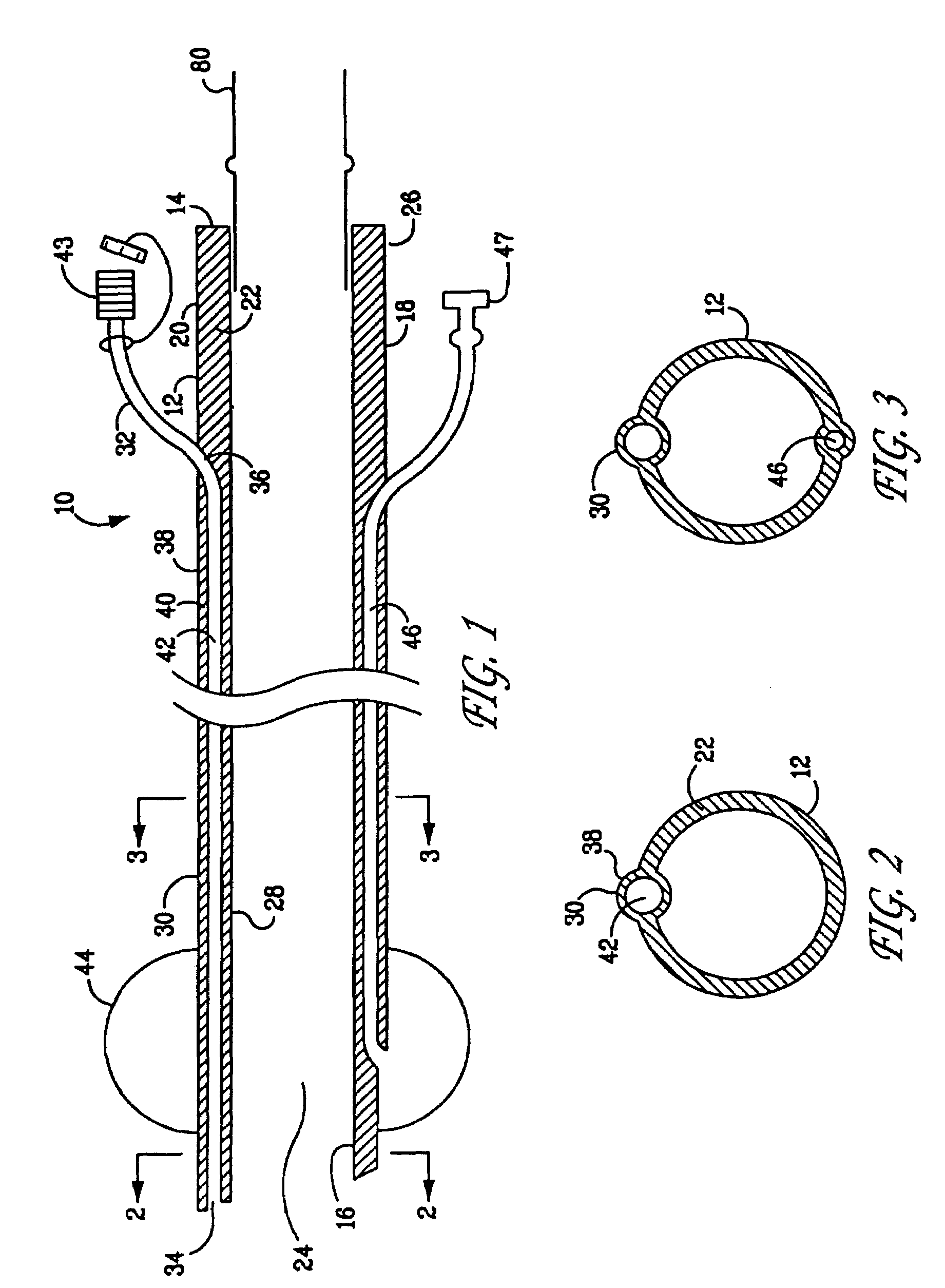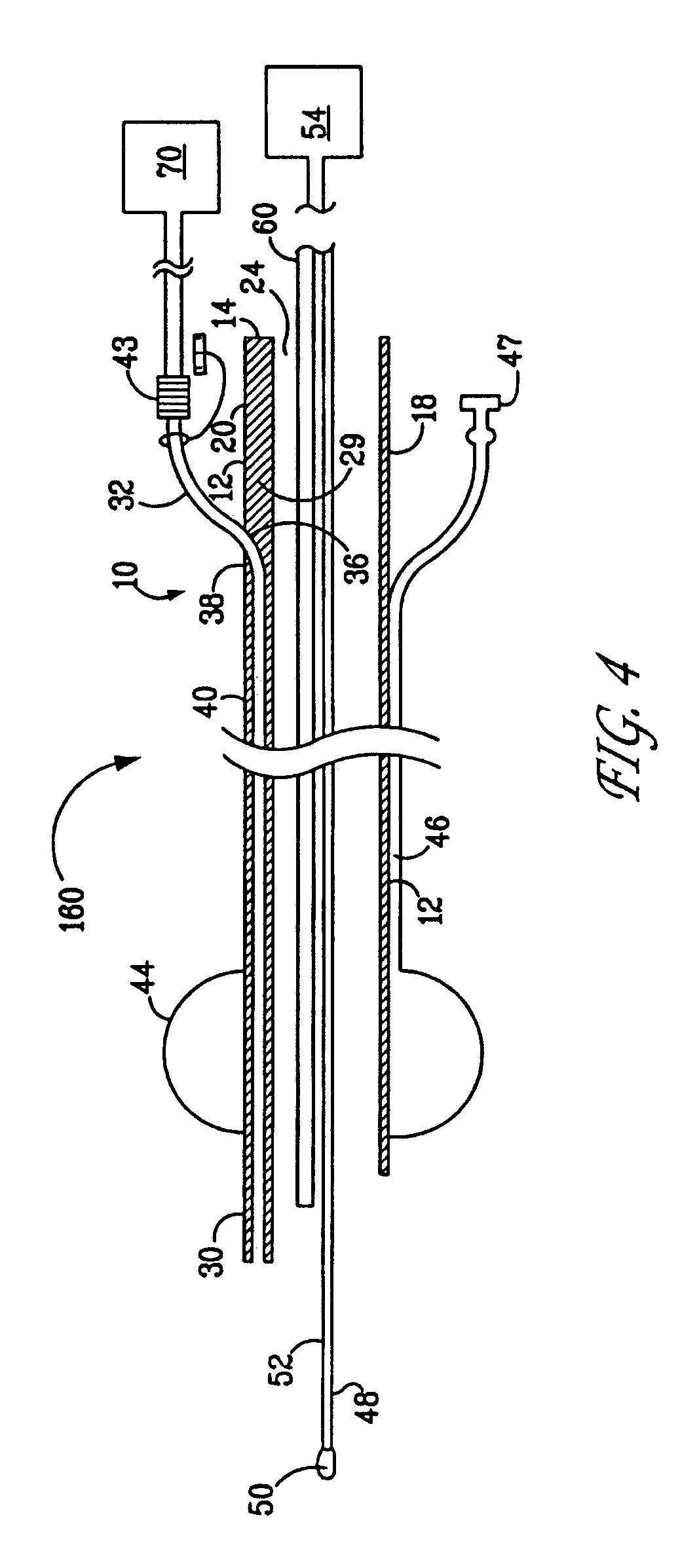Jet endotracheal device and its use in intubation
a technology of endotracheal device and intubation tube, which is applied in the direction of medical devices, other medical devices, respiratory apparatus, etc., can solve the problems of severe damage, difficult or impossible to intubate the trachea with grade iii or iv view quickly, and medical complications or even death
- Summary
- Abstract
- Description
- Claims
- Application Information
AI Technical Summary
Benefits of technology
Problems solved by technology
Method used
Image
Examples
Embodiment Construction
[0049]Based on experimental results obtained and described below, the endotracheal unit, device and method of the present invention provide the following advantages: The endotracheal unit and device of the present invention is simple and easy to use, even for the beginner without previous experience of tracheal intubation. Further, the endotracheal unit is not expensive and easily constructed using conventional materials. The endotracheal unit and device of the present invention provide adequate oxygenation and ventilation during the intubation even for patients with complete apnea, thus increase the safety of intubation. The endotracheal unit and device of the present invention provide easy and effective guiding methods for assisting the tracheal intubation blindly even at Grade III or IV view of glottis in a difficult airway. The endotracheal unit has been designed to minimize the intubation-associated complications, such as airway trauma, barotraumas and misplacement into the eso...
PUM
 Login to View More
Login to View More Abstract
Description
Claims
Application Information
 Login to View More
Login to View More - R&D
- Intellectual Property
- Life Sciences
- Materials
- Tech Scout
- Unparalleled Data Quality
- Higher Quality Content
- 60% Fewer Hallucinations
Browse by: Latest US Patents, China's latest patents, Technical Efficacy Thesaurus, Application Domain, Technology Topic, Popular Technical Reports.
© 2025 PatSnap. All rights reserved.Legal|Privacy policy|Modern Slavery Act Transparency Statement|Sitemap|About US| Contact US: help@patsnap.com



